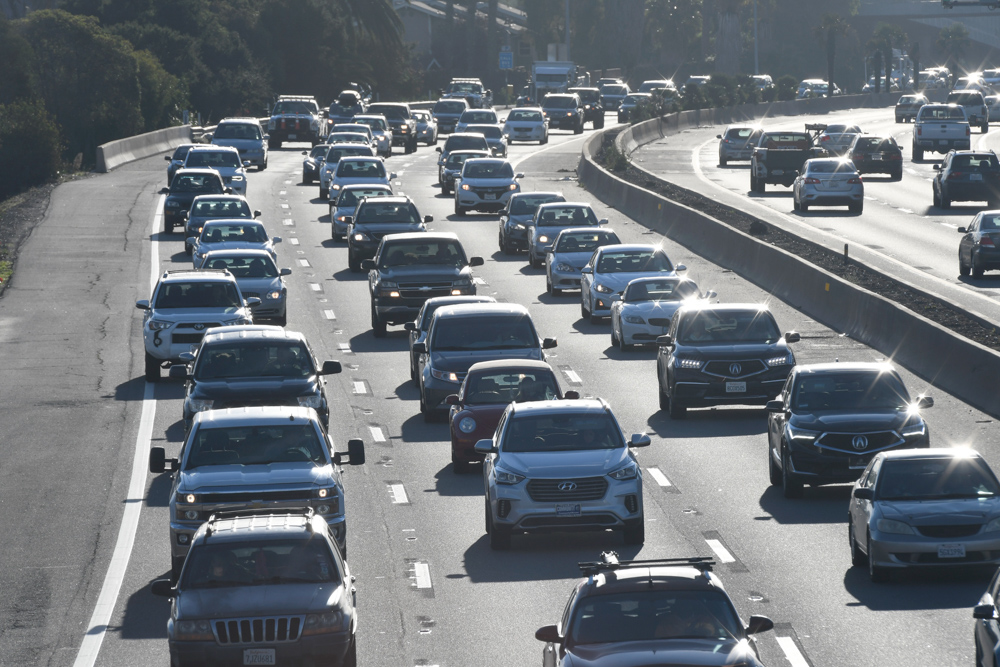
Some very bewildered and exasperated county supervisors spent Tuesday morning trying to wrap their arms around one stubborn, incongruous fact: Greenhouse gas emissions released in unincorporated Santa Barbara County were 14 percent higher in 2016 than they were in 2007. Based on the county’s Energy and Climate Action Plan — also known as ECAP — those emissions should have dropped by 15 percent. In other words, the county is 29 percentage points away from where its planning policies say it should be.
Fifth District Supervisor Steve Lavagnino — who represents the Santa Maria area — was most incredulous. How could a place so famous for its environmental consciousness and regulatory zeal have fallen so far below its goal, he wondered, especially when the state as a whole is hitting its emission reduction marks? “It’s just counter common sense,” he exclaimed. First District Supervisor Das Williams had an idea. “One possible explanation is that we’re poseurs,” he said, “that we talk about it but don’t follow through.”
Williams said anyone observing traffic would see that 97 percent of all motorists drive alone. “It’s off the charts,” he said. The single largest generator of greenhouse gases in Santa Barbara County is traffic — 56 percent. From 2007 to 2016, that tonnage jumped by 12 percent. “It’s VMT,” Williams stated, bureaucratic lingo for vehicle miles traveled. Even with cleaner fuels and more efficient cars, the increased number of miles driven translates into more emissions. The most dramatic percentage gains took place in the construction and agriculture industries — which jumped by 36 and 32 percentage points, respectively. The only sectors in which emissions actually dropped were in solid waste and water treatment.
These numbers were released just as the world has found itself bombarded with a steady stream of new scientific and government reports indicating that the pace of global warming is moving faster than previously believed and that the damage inflicted will be even more dire than the pessimists initially projected. This helped fuel the sense of urgency a majority of supervisors expressed about the need for action. Williams called climate change, “The moral issue of our age.” Third District Supervisor Joan Hartmann added, “History will judge us on what we do here today.”
The supervisors voted to double down on even higher emission-reduction goals, vowing to reduce them to 50 percent of what they were in 1990 by the year 2030. Most of the supervisors argued it was important for the county government, with its sprawling operations and 4,000 employees, to put into practice what the supervisors had been preaching. Building efficiencies had to be increased, and electric vehicles purchased to replace older county cars.
Roughly 1,000 of the county’s workforce commutes more than 60 miles a day round-trip; flex-time options and telecommuting needed to be explored, the supervisors said, as well as better incentives to get workers to carpool, ride the bus, or use their bikes. Currently, employees who avail themselves of “green commuting” options are eligible for two additional vacation days. The supervisors suggested such incentives needed to be sweetened.
Fourth District Supervisor Peter Adam cast the sole dissenting vote, explaining that to pay for such programs, the supervisors would have “to tax the crap out of everything,” which he predicted would “decimate” the economy. “This is why Paris is on fire every weekend,” he said, alluding to the riots now engulfing Paris by protesters angry at the gas-tax increase proposed by the French government.
On the same day, the county supervisors adopted a new planning framework to address the consequences of sea-level rise. At the urging of many environmentalist organizations, the supervisors voted to increase the expected risk profile for which it was planning from a 30-inch rise in sea level by the year 2100 — adopted by the board just five weeks ago — to a 60.2-inch increase. (The City of Santa Barbara, by contrast, is planning for a 78-inch rise in sea level by that time. The city and county both used the same consultant to parse their numbers, but the city started later and the “best available” technology has changed.)
That vote, by the way, was unanimous. Even Adam, who typically argues human efforts to combat climate change cause more harm than good, voted for it. “I’m going to support it because it does not affect me or my constituents,” he said.

 on Google
on Google 

